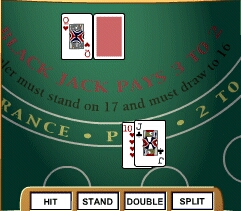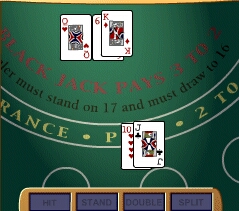
|
|
BlackJack Rules
The game of BlackJack is by far the most popular table game offered in casinos and on the internet. If you are unfamiliar with the rules of blackjack, you've come to the right place! The various Blackjack rules that can differ from one casino to another. But these are the basic blackjack rules.
Object of the BlackJack game: The basic premise of the game is that you want to have a hand value that is closer to 21 than that of the dealer, without going over 21. Other players at the table are of no concern. Your hand is strictly played out against the hand of the dealer.
The numerical values of the cards are: (10, J, Q, K) = 10; (Ace) = 1 or 11; (Other cards) = face value (7= 7). A blackjack occurs when the dealer or a player draw an ace and a ten (10, J, Q, K). A black jack usually pays 3 to 2. This means that if you bet 20 dollars, you will win a further 30 dollars on a Black jack.
The Deal: Each player is dealt two cards in sequence, one at a time, either face up or face down, depending on the house rules, in a clockwise direction. The dealer receives one card down and one card up. Now the player has to decide what to do.
Example of Blackjack rules: We receive a 10 and a jack, in total a value of 20. The dealer receives a queen, and his hand has the value 10 at this point. Now the player has to decide what to do.
In this example we chose ‘Stand’, and the turn goes to the dealer. If the dealer's hand is 16 or less, he must take a card. If the dealer's hand is 17 or more, he must stand.
The next card happends to be a king, which means that the dealer’s hand has the value 26, which is higher than 21. This is called a ‘bust’ and results in the dealer losing this round.
BlackJack rules Example 2
Advance Black Jack Strategy: See BlackJack chart
|


